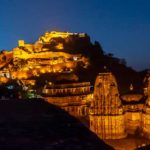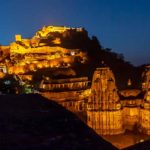Kumbhalgarh Travel Guide, located in Rajasthan, is a historical gem known for its majestic fort and scenic surroundings. The Kumbhalgarh Fort, a UNESCO World Heritage Site, is the main attraction, featuring massive walls stretching over 36 kilometers, making it the second-longest wall in the world after the Great Wall of China. Inside the fort, visitors can explore numerous temples, palaces, and gardens, with the Badal Mahal offering panoramic views.
For nature enthusiasts, the Kumbhalgarh Wildlife Sanctuary is a must-visit, home to a variety of wildlife including leopards, wolves, and exotic birds. Adventure seekers can enjoy trekking through the sanctuary’s rugged terrain.
Kumbhalgarh is also known for its vibrant festivals, particularly the annual Kumbhalgarh Festival, which showcases the region’s rich cultural heritage through dance, music, and arts.
The best time to visit is between October and March when the weather is pleasant. Kumbhalgarh can be reached by road from Udaipur, around 85 km away.
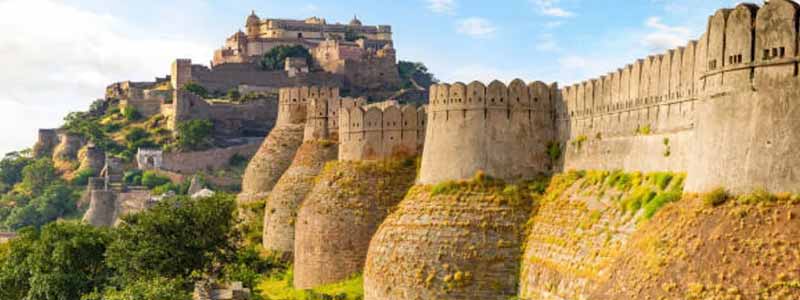
History of Kumbhalgarh
Kumbhalgarh, a magnificent fortress in Rajasthan, has a rich history dating back to the 15th century. It was built by Rana Kumbha of the Mewar dynasty in 1443 AD. Strategically perched on the Aravalli hills, the fort served as a crucial defense point for the kingdom of Mewar. The fort’s massive walls, stretching over 36 kilometers, made it almost impregnable and earned it the title of “The Great Wall of India.”
Kumbhalgarh holds historical significance as the birthplace of Maharana Pratap, one of Mewar’s greatest rulers, who famously resisted Mughal expansion in the region. The fort’s architecture reflects a blend of Rajput and Mughal styles, with its intricate temples, palaces, and gates, Kumbhalgarh Travel Guide.
Over the centuries, Kumbhalgarh witnessed several battles and sieges, with the fort remaining unconquered except for a brief period when it fell to the combined forces of Mughal Emperor Akbar, Raja Man Singh of Amber, and the Sultan of Gujarat in 1576. Despite this, Kumbhalgarh remained a symbol of Rajput valor and resilience, playing a pivotal role in the region’s history. Today, it stands as a UNESCO World Heritage Site, attracting visitors from around the world.
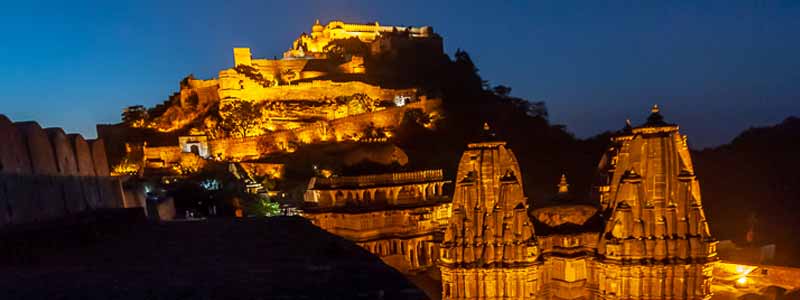
Places To Visit in Kumbhalgarh
Kumbhalgarh is rich in history, culture, and natural beauty, offering several must-visit attractions:
Kumbhalgarh Fort: The centerpiece of the town, this UNESCO World Heritage Site is known for its massive walls, temples, and the Badal Mahal, which offers stunning views of the surrounding landscape.
Kumbhalgarh Wildlife Sanctuary: Spanning the Aravalli range, this sanctuary is home to diverse wildlife, including leopards, wolves, and various bird species. It’s a great spot for trekking and nature walks.
Badal Mahal: Located within the fort, this “Palace of Clouds” is renowned for its colorful murals and panoramic views of the Aravalli hills.
Mammadev Temple: Situated near the fort, this ancient temple is dedicated to Lord Shiva and houses inscriptions that provide insights into the history of the region.
Neelkanth Mahadev Temple: This temple is famous for its six-foot-tall Shivlinga and is an important pilgrimage site.
Vedi Temple: A Jain temple located within the fort complex, it is an architectural marvel and holds religious significance.
Parshuram Temple: Nestled in a cave, this temple is dedicated to the sage Parshuram and offers a serene atmosphere and breathtaking views.
Muchhal Mahavir Temple: Located near the Kumbhalgarh Wildlife Sanctuary, this Jain temple is known for its intricate carvings and the statue of Lord Mahavira with a mustache, a unique feature.
These attractions make Kumbhalgarh a diverse destination, blending history, spirituality, and nature.
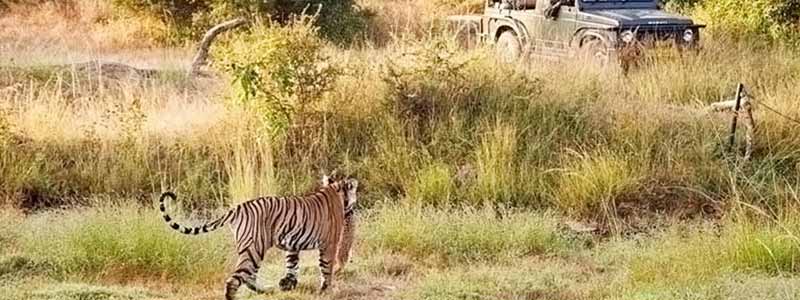
Things to do in Kumbhalgarh
Kumbhalgarh offers a variety of activities for visitors, ranging from historical exploration to outdoor adventures:
Explore Kumbhalgarh Fort: Discover the grandeur of the Kumbhalgarh Fort, walking along its 36-kilometer-long walls, exploring the ancient temples, and enjoying the views from Badal Mahal.
Wildlife Safari in Kumbhalgarh Wildlife Sanctuary: Embark on a wildlife safari to spot animals like leopards, wolves, and various bird species. The sanctuary also offers trekking opportunities through its rugged terrain.
Trekking and Nature Walks: Trekking is a popular activity in Kumbhalgarh, with trails leading through the Aravalli hills and the Kumbhalgarh Wildlife Sanctuary. The routes offer scenic views and a chance to connect with nature.
Attend the Kumbhalgarh Festival: Visit during the annual Kumbhalgarh Festival, usually held in December, to experience vibrant cultural performances, including folk dances, music, and traditional arts and crafts.
Visit Ancient Temples: Explore the many ancient temples in and around Kumbhalgarh, including the Neelkanth Mahadev Temple, Mammadev Temple, and Vedi Temple, each offering a unique spiritual experience.
Photography: The stunning landscapes, historic architecture, and abundant wildlife make Kumbhalgarh a paradise for photographers. Capture the beauty of the fort, the surrounding hills, and the local flora and fauna.
Bird Watching: The Kumbhalgarh Wildlife Sanctuary is a haven for bird watchers, with numerous species of birds inhabiting the area. Bring your binoculars and enjoy spotting colorful and rare birds.
Picnicking: Enjoy a peaceful picnic at one of the scenic spots in Kumbhalgarh, surrounded by nature and the serene ambiance of the Aravalli hills.
These activities ensure a memorable visit, whether you’re interested in history, adventure, or simply relaxing amidst nature.
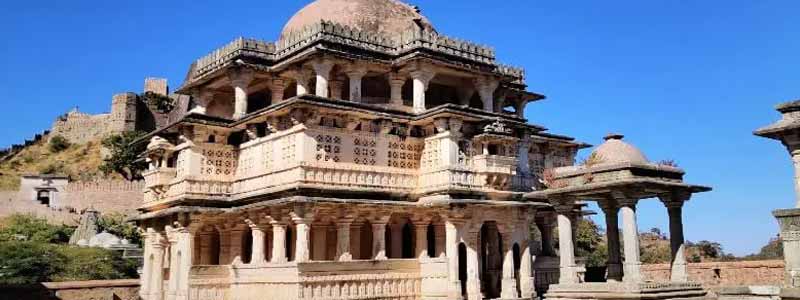
Best time to Visit in Kumbhalgarh
The best time to visit Kumbhalgarh is from October to March. During this period, the weather is cool and pleasant, making it ideal for exploring the fort, wildlife sanctuary, and other outdoor activities. Here’s a breakdown of what to expect:
October to March (Winter): This is the peak tourist season, with temperatures ranging between 10°C to 25°C. The cool climate is perfect for sightseeing, trekking, and attending the Kumbhalgarh Festival, which usually takes place in December.
April to June (Summer): The summer months can be quite hot, with temperatures soaring up to 42°C. While the mornings and evenings are still manageable, the midday heat can make outdoor activities uncomfortable. However, this is a good time to visit if you prefer fewer crowds and discounted hotel rates.
July to September (Monsoon): Kumbhalgarh receives moderate rainfall during the monsoon, which brings a fresh, green cover to the region. The fort and surrounding hills look particularly beautiful during this time. However, trekking and exploring the wildlife sanctuary might be challenging due to slippery terrain.
For the best experience, plan your visit during the winter months when the weather is at its most pleasant.
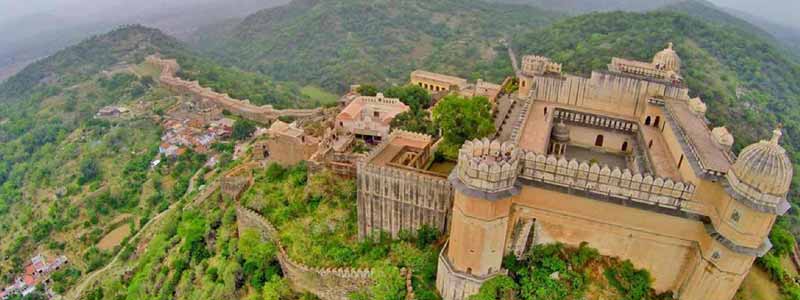
How to Reach Kumbhalgarh
Kumbhalgarh is well-connected by road and can be reached from various cities in Rajasthan and neighboring states. Here’s how to reach Kumbhalgarh Travel Guide:
By Air: The nearest airport is Maharana Pratap Airport in Udaipur, about 85 km away. It has regular flights from major Indian cities like Delhi, Mumbai, and Jaipur. From the airport, you can hire a taxi or take a bus to Kumbhalgarh.
By Train: The nearest railway station is Falna, approximately 49 km away. Falna is well-connected to cities like Jaipur, Jodhpur, and Ahmedabad. Another nearby station is Udaipur, which is about 85 km away. Taxis and buses are available from these stations to Kumbhalgarh.
By Road: Kumbhalgarh is easily accessible by road. Regular buses and taxis operate from Udaipur, Jaipur, Jodhpur, and other nearby cities. The drive from Udaipur to Kumbhalgarh takes about 2 hours, offering scenic views of the Aravalli hills.
Hiring a car or taxi is a convenient option for those who prefer a comfortable and flexible journey.
FAQS about Kumbhalgarh Travel Guide
Here are some frequently asked questions (FAQs) about Kumbhalgarh:
What is Kumbhalgarh known for? Kumbhalgarh is renowned for its massive fort, Kumbhalgarh Fort, which is a UNESCO World Heritage Site. The fort is known for its impressive walls, which are the second-longest in the world, and its rich history. The region is also famous for its wildlife sanctuary and scenic beauty.
What is the best time to visit Kumbhalgarh? The best time to visit Kumbhalgarh is from October to March when the weather is cool and pleasant, ideal for sightseeing and outdoor activities.
How can I reach Kumbhalgarh? Kumbhalgarh can be reached by air via Maharana Pratap Airport in Udaipur (85 km away), by train from Falna or Udaipur railway stations, or by road from major cities like Udaipur, Jaipur, and Jodhpur. Taxis and buses are available from these transport hubs.
Are there accommodations in Kumbhalgarh? Yes, Kumbhalgarh offers a range of accommodations, including hotels, resorts, and guesthouses. Options vary from luxury to budget, with many providing scenic views and proximity to the fort.
What are the must-visit attractions in Kumbhalgarh? Key attractions include Kumbhalgarh Fort, Badal Mahal, Kumbhalgarh Wildlife Sanctuary, Neelkanth Mahadev Temple, and various ancient temples within and around the fort complex.
Is there an entrance fee for Kumbhalgarh Fort? Yes, there is an entrance fee for Kumbhalgarh Fort. Fees may vary based on nationality (Indian or foreign) and whether you wish to take a guided tour.
Can I go trekking in Kumbhalgarh? Yes, trekking is popular in Kumbhalgarh, especially in the Kumbhalgarh Wildlife Sanctuary. There are various trekking routes that offer stunning views and opportunities to spot wildlife.
What should I wear while visiting Kumbhalgarh? Comfortable clothing and walking shoes are recommended, especially for exploring the fort and trekking. It’s also advisable to wear layers during cooler months and carry sun protection during warmer periods.
Are there any dining options in Kumbhalgarh? Yes, Kumbhalgarh offers dining options ranging from local Rajasthani cuisine to international dishes. Restaurants are available within hotels and resorts, as well as local eateries and street food stalls.
What activities are available in Kumbhalgarh? Activities include exploring Kumbhalgarh Fort, wildlife safaris in the sanctuary, trekking, stargazing, attending local festivals, and shopping for traditional handicrafts.




